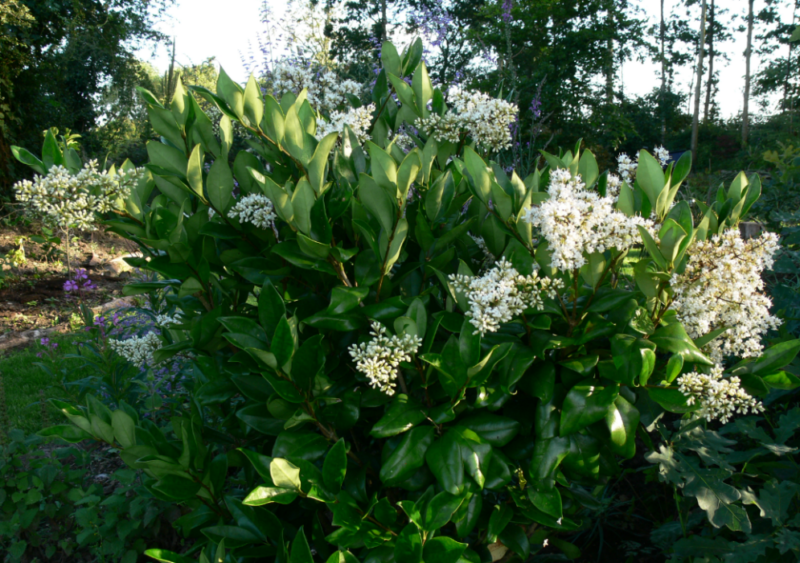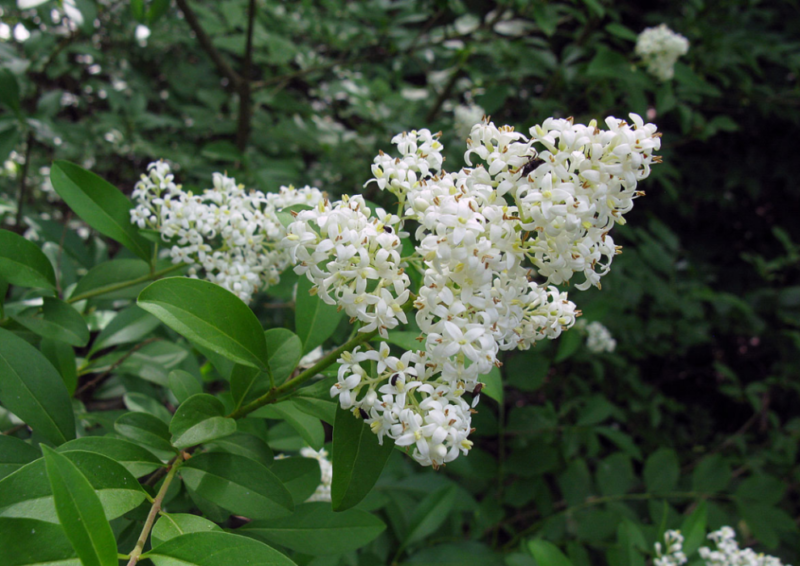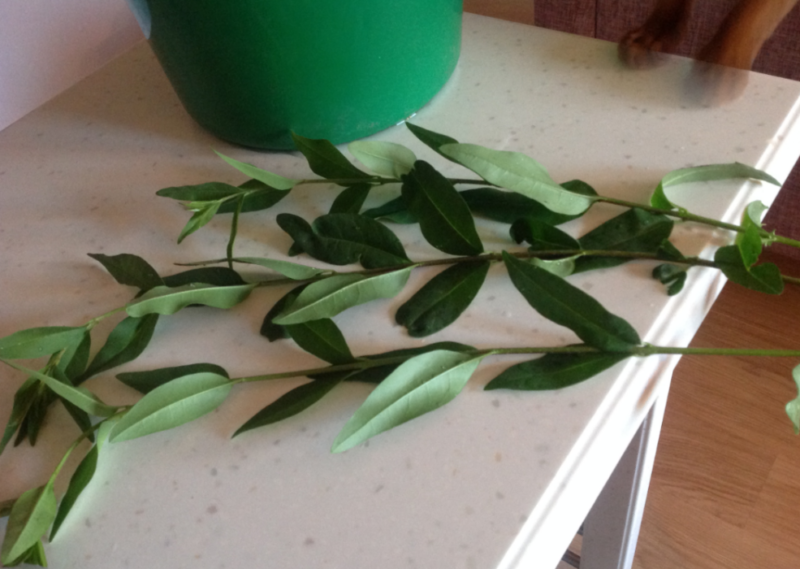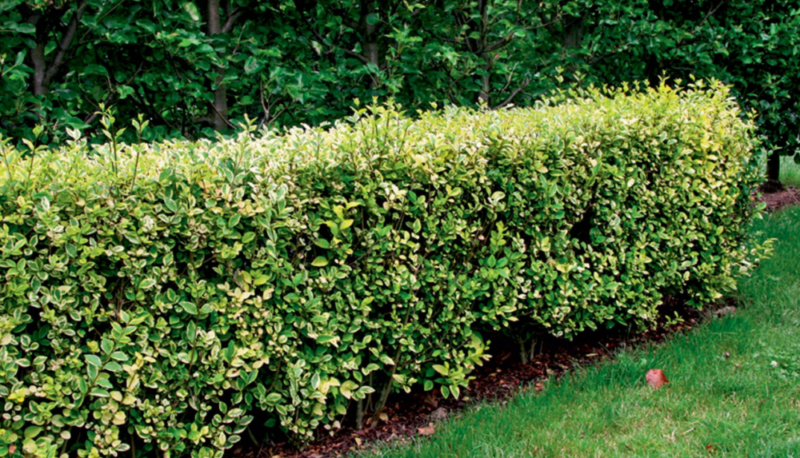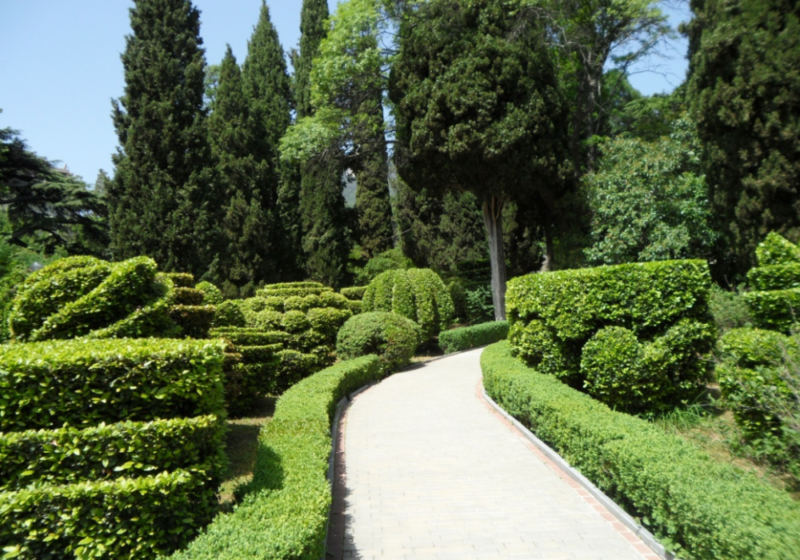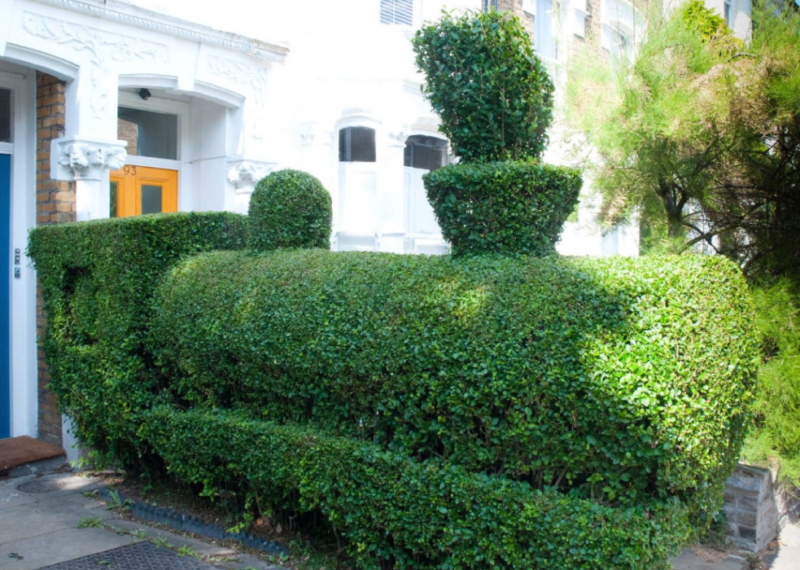One of the most attractive deciduous shrubs for growing in your own garden or front garden is the common privet. They relate it to the Maslinov family, where more than 50 species are combined, and many of them are evergreens. The homeland is Asia, North Africa, Europe and Australia.
Material Content:
Description privet ordinary
The height of the privet bush reaches 2 m, and in width it can grow up to 1 m. There is a species that resembles a small tree, with a spreading and lush crown and a height of up to 6 m. The leaves are elongated, with straight edges, the front side is darker, and with the opposite they are bright.
The white inflorescences of privet have an excellent aroma. They are collected in panicles up to 18 cm long. The total flowering time is about 3 months. It lasts all summer from June to July. Later, fruits appear as black or navy blue drupes, similar to berries. They include up to 4 seeds. The description of the species indicates the rapid growth of the plant and its frost resistance.
Varieties and varieties
There are several varieties of privet that are most often grown in gardens. They differ in the conditions necessary for growth, appearance and purpose of application. The most popular is the common privet, includes varieties Aureum, Vicar, Aureo-variegatum. Grows up to 5 m, has poisonous berries. The life span of the bush is up to 70 years.
Among others, there are:
- Japanese. Height is up to 4 m, shade-tolerant. It is distinguished by motley and round foliage.
- Golden. It grows very quickly, easily lends itself to crown formation, is undemanding to the soil, but does not like a lot of moisture, drafts.
- Brilliant. It is able to grow up to 6 m, blooms longer than others, the fruits are blue.Often there is foliage golden-edged, golden-motley and tricolor.
- Variegated. Blooms late, is a relative of the Chinese species.
- Rotundifolia. It does not tolerate frosts, leaves remain green even in winter.
- Oval-leaved. Low, only up to 1 m tall, often does not bloom, but when flowers appear it has an unpleasant odor and does not tolerate frost. Her varieties are Variegatum, Argentum and Aureum.
- Sinense or Chinese. Height reaches 7 m. Leaves are large, up to 7 cm.
- Ibotu, with a spreading crown, grows up to 2 m, very thermophilic.
- Jesuit is a winter-hardy species, the birthplace of Sakhalin. Loves the shadow, reaches 1.5 m, medium-sized foliage.
- Acute, grows up to 3 m, blooms profusely, but not for long, about 2 weeks.
- Dense, it does not bloom. It can grow up to 4 m in the wild, and in the garden up to 2 m. The leaves are large, they are not dumped for the winter, poor winter hardiness.
- Quihou, with hard and small leaves, pubescent on the back side, and color panicles reach 20 cm. Varigatum and Vicar are distinguished from varieties.
All species can grow in diverse regions, it depends mainly on the ability to tolerate frost. They differ in the duration of flowering and the height of the bush.
Shrub planting
Privet does not need special soil, but dry, acidic and sandy ones are not recommended.
It can be planted in partial shade, but for high decorativeness it will still require compliance with certain conditions. The distance from shrubs and trees, as well as other obstacles should be more than 80 cm, planting is carried out in drained soil saturated with nutrients, neutral or slightly alkaline earth is preferable.
Soil is made of three parts of turf, two humus and one sand. Planting and transplanting is best done in April before the inflorescences bloom. The earth is pre-excavated, then a hole is made 30 cm deeper than the seedling root, and 70 cm wide.
Further:
- pour a bucket of water;
- only after completely absorbing it into the soil, pour crushed stone to the bottom with a layer of 15 cm;
- mix part of the prepared soil with 120 g nitroammofoski;
- pour this mixture into the pit;
- establish a seedling by spreading its roots;
- fill with earth to the top.
The first month you need to carefully monitor that the land near the trunk does not dry out, and then mulch it with peat, a layer of 7 cm. It is better to make a hedge of bushes with a trench 60 cm deep and about 50 cm wide. The distance between the seedlings will be 35 cm. the procedures are the same.
Agrotechnics of cultivation and care
Growing privet is a simple task, the main thing is not to forget about watering, carry out regular pruning, for quality care, loosening the soil, removing weeds is important. At the same time, by mulching the soil surface, it will be possible to reduce irrigation, but you need to cover it after a good warming up of the earth.
Watering during the onset of drought, and if the summer is mild, raining will be enough for the bush. What matters is not the frequency of this process, but its abundance, so that water can penetrate to a depth of more than 0.5 m. With a hot summer, you can pour privet 4 times in 4 buckets per bush.
Special and complex feeding is also not needed. In the spring, 1 bucket of humus is enough for the bush, pour superphosphate on top of it, not more than 10 g / m2, patch it into the ground and water it.
The privet quickly gains height, and therefore pruning is performed constantly. As soon as the bush has started to grow, immediately it is necessary to begin to give it shape. Even if several mistakes are made, the plant will quickly correct them by releasing many young shoots. Frequent adjustment makes the shrub more sprawling and lush. The first 2 years you need to regularly expose the plant to this procedure.
Sanitary pruning is carried out in early spring to remove frozen and broken branches.
The first haircut is done in May, the second in August. In the Northern regions, it is best to cover the bush before the onset of cold weather with spruce branches, and to fill up the trunk circle with mulch.
Propagation of privet
To propagate this plant in the garden, you can use:
- by seeds;
- cuttings;
- layering.
The first method is the longest, and about half of the planted kernels will sprout. For such a cultivation, you will need the most ripe, large fruits. They are placed in water, after part of them emerges, you need to leave those that are at the bottom, the rest should be discarded. Then, in the fall, these seeds are planted in open ground, shoots appear in a year.
Cuttings are able to take root in 95% of cases. It is better to use summer shoots, choosing more developed ones, about 10 cm long. They should be planted in a turf mixture and covered with coarse sand on top. In this case, the slope of the handle is made at 450, and it is deepened by 5 cm. The temperature is maintained at 23 0C, humidity is observed. They are planted in open ground after reaching more than 55 cm.
It is also easy to propagate by layering. In spring, a branch is selected that is closer to the soil than the rest, bends and fixes. An incision is made from below, covered with earth, and sphagnum is placed on top. This place should be moistened constantly, and the end of the branch should be in the air, and not under the ground. As soon as the roots grow, the plant will begin to grow in length. Separate layers from the motherboard for next year, in the spring.
Pests and diseases
Privet does not get sick and has little interest in pests.
At the same time, she sometimes has some difficulties:
- powdery mildew, spotting appear when growing in acidic soil. The limestone regularly introduced into the soil will help to cope; you can replace it with dolomite flour;
- spider mites, thrips, aphids, scutes, or worms are easily removed by Fitoverm or Aktellik. The processing will most likely not be one, no more than four is permissible.
With proper care, the bush will not get sick, and timely pruning will help to avoid infection by pests.
Decorative fence
The hedge of privet will give a special zest to the garden, decorate it, create a unique charm. The ornamental shrub is unpretentious, grows even on poor soils, tolerates the absence of watering.
To plant the privet in the form of a green fence, you need to dig a trench, at the bottom of which you pour a mixture of ash (0.3 kg), lime (0.15 kg) and mineral fertilizers (0.07 kg). When planting, seedlings are best planted in a checkerboard pattern, then the bush will turn out more magnificent and higher. But it is allowed in a row, most importantly, to withstand no more than 40 cm between plants.
If everything is done correctly, then the bulk of the seedlings will survive, and they will grow up to 55 cm in a year. Watering is carried out no more than 6 times a year, while it is better to make water less often, but more. Be sure to loosen the soil, adding lime and sand to it. Privet responds well to phosphorus and nitrogen fertilizers.
The plant can be cut in many ways and give an unusual shape. The most common and classic are square, rectangle and trapezoid. It is best to carry out the molding procedure in the spring.
Decorative pruning is performed after the bush has acquired a lush and impenetrable crown.
It will help strengthen the branches and their development.


